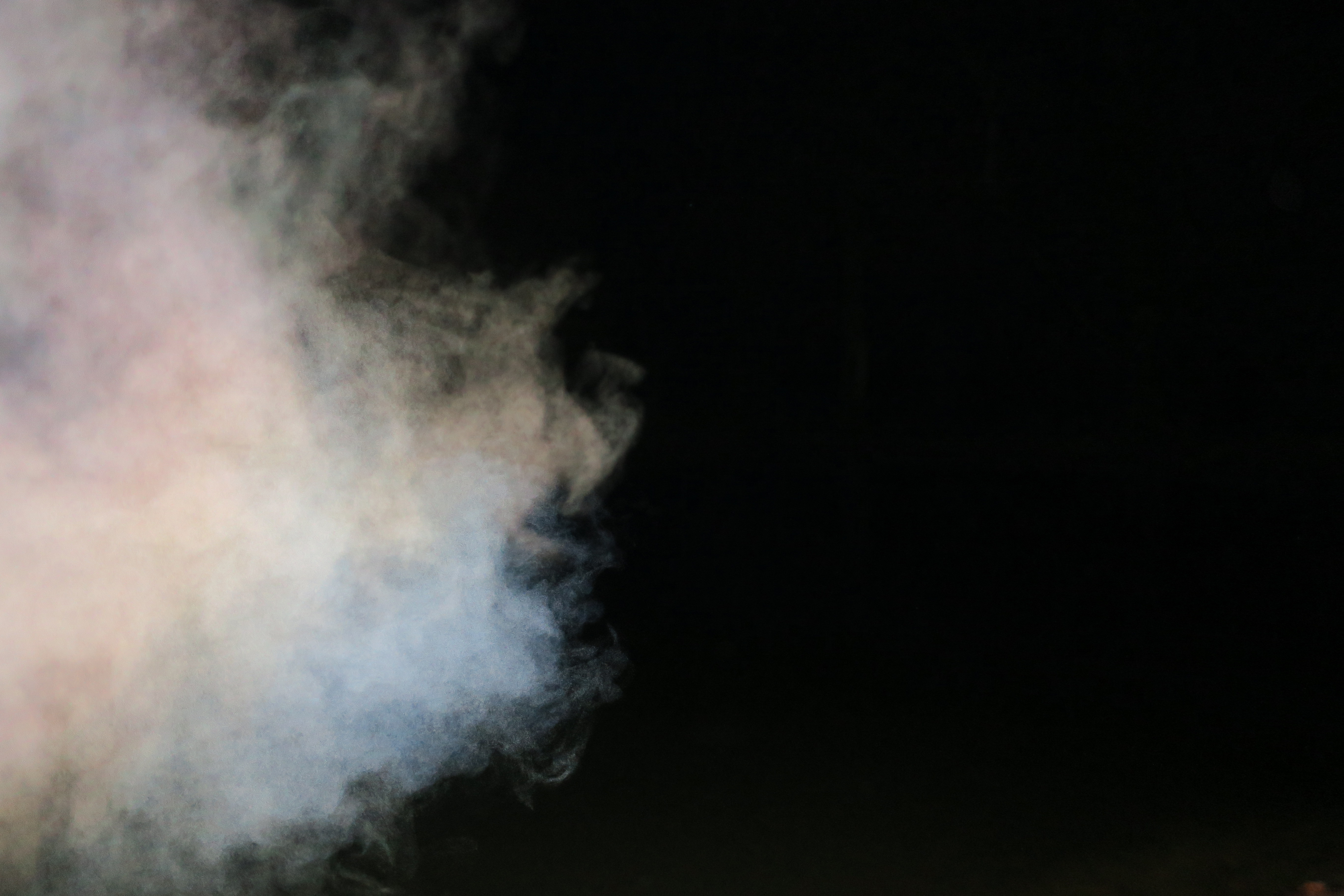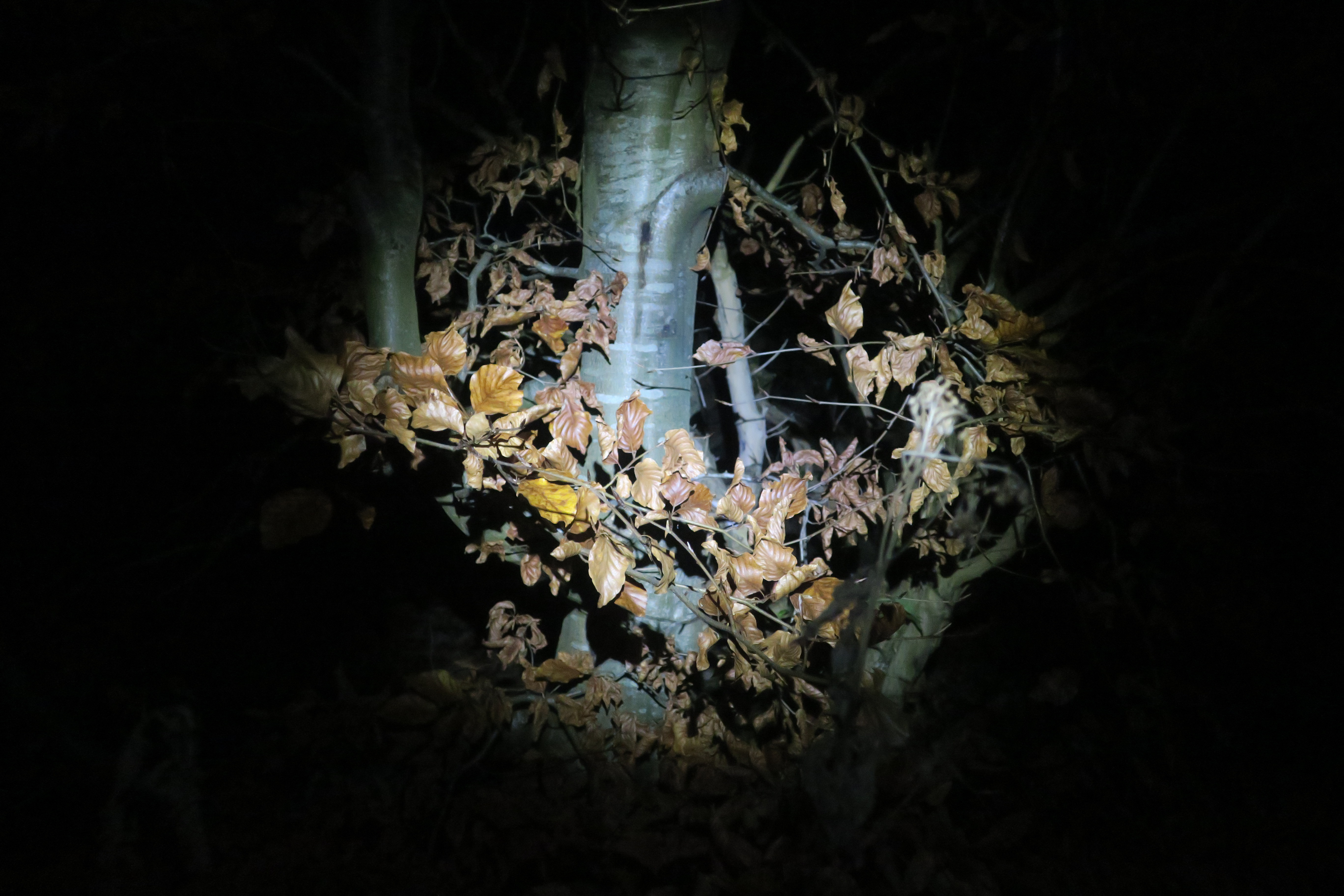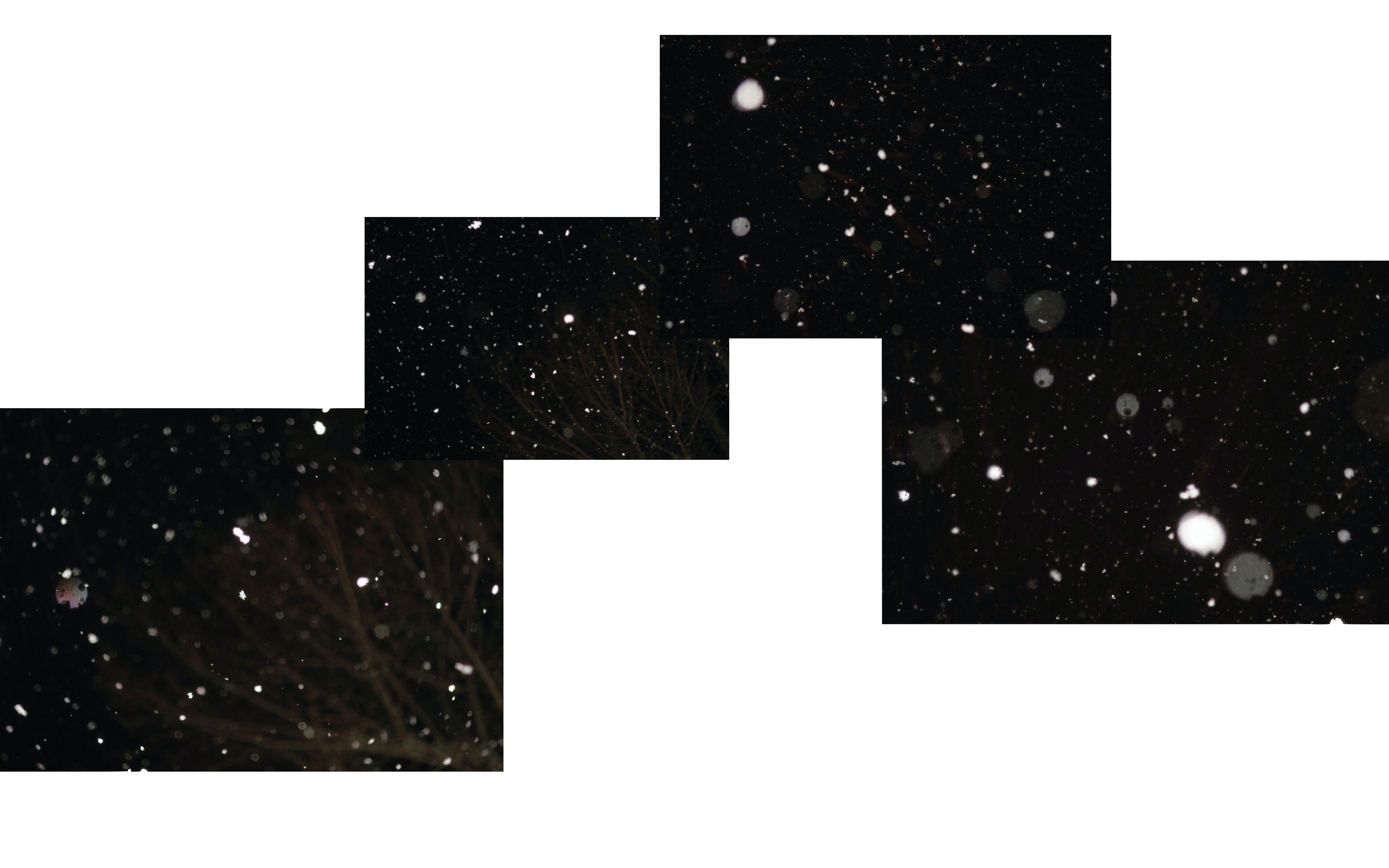Angus Carlyle’s Night Blooms collects nocturnal explorations of an area of woodland close to his home on the South Coast of England. Poetic prose and photographic experiments document Carlyle’s chosen medium of running, an everyday act he has repeated across specific trails in solitude for years. In Night Blooms, public space becomes unrecognised—trespassed underfoot and collected. We encounter the smells, noises, the presence of inhabitants; bats, a nightjar, laughter, concrete. A head torch provides a prism of vignetted light and acts as a portable studio, like a lantern to the understory of a secret yet shared space. Everyday objects take on a new status—shrine-like, sinister, glowing. The exhale of breath, bad weather, a deflated bouncy castle are seemingly snatched at pace from the air. If there is a constant character here, it is the blooms which remain more familiar, unwieldily and delicate. Night Blooms takes us up high—as territory, trails and terrain overlap and collide, re-assembled glimpses offer study caught in motion.
The pamphlet is available from the publisher here.
The pamphlet is available from the publisher here.


DESCRIPTIONS FROM SIX SOURCES (Alphabetical)
Yellow, in a spike,
Waxy white and bell-shaped,
Clusters on the tip,
Can form dense thickets,
Along shady banks,
Hedgerows, heaths and waste ground, Shady places and old walls,
An escape from cultivation.
Rides and clearings,
Pensiveness,
Cheerfulness,
End and beginning,
Pairs of opposite,
Picked out in winter.
Carrying it upwards in
Warmth,
Sky-blue and
Almond-scented,
Kidney-shaped to heart-shaped,
The ‘May-tree’ of old.
Smells harsh when bruised,
Becomes increasingly attractive,
Toothed, wrinkled, stalked
On the banks of streams, rivers, canals and sea lochs. Where ring of bristles,
Of waysides and especially of railway embankments, All very much alike,
“I do not care for you”,
They close at sunset,
Almost in the blink of an eye,
A standard at the back,
A lover, otherwise dreary,
Is in decline.
In pavement cracks,
And pitted,
Grassy places,
In copses and thin woods,
The delicate,
Appearance of wreaths of smoke.
In the evening,
En masse is almost ethereal,
Turning their faces away from the blast.
LEAVES POCKETED FROM WET WOODS
THEN LEFT TO DRY
Alder
Ash
Sycamore
Rowan
Elm
Oak
Field Maple
Common Hazel
Beech
Ivy
Holly
Cherry
Yew

TO THE BRIDGE & BACK
Feet beating the ground, the ground sounding its surface in return. Breath drawn in and let out through nose and mouth (occasional spits and grunts, coughs and sighs, three words near the end). The hiss of bag straps across my shoulders a cymbal for my feet’s drum.
Branches bent against other branches and drips shake to the pavement as the fox wrenches a way through the bowling green hedge. A bus passes, its sound building to more intricacy and hanging in the air for longer than those from the four cars that follow close behind.
The first firework only became a firework when the second exploded. Three blue faces at the bus stop talk while looking at screens. A dog makes a diagonal of its leash, front paws clawing air, teeth bright white points under the streetlamp, raw barking.
A crow crows somewhere in the mist near the shrine in the tree, my watch beeps a second mile, traffic is more frequent, and louder. Louder like my footfalls on the way home, each step now met in the heavier rain by a wet double and an impression in bubbles.
Branches bent against other branches and drips shake to the pavement as the fox wrenches a way through the bowling green hedge. A bus passes, its sound building to more intricacy and hanging in the air for longer than those from the four cars that follow close behind.
The first firework only became a firework when the second exploded. Three blue faces at the bus stop talk while looking at screens. A dog makes a diagonal of its leash, front paws clawing air, teeth bright white points under the streetlamp, raw barking.
A crow crows somewhere in the mist near the shrine in the tree, my watch beeps a second mile, traffic is more frequent, and louder. Louder like my footfalls on the way home, each step now met in the heavier rain by a wet double and an impression in bubbles.
Angus CARLYLE is interested in landscape and in other things besides. He works collaboratively and on his own. Publications include On Listening (co-edited with Cathy Lane), Autumn Leaves (as editor), In The Field and Rough Notes. His creative work frequently involves collaboration.


